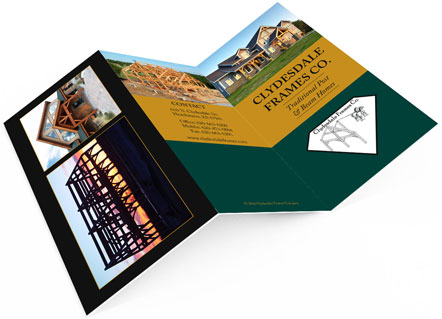Timber Frame Terminology
Learn to read Greek!
Basic Architectural Terms
-
What's on a sheet?
The plans for the timber frame and the rest of the house come in sets of sheets. Each sheet has a specific number; “T1? for example is the first sheet of the timber frame plans. “A1” is the first sheet for the floor plans, etc. This number is found in the lower right corner. When relaying changes, it’s a good practice to state which sheet you’re looking at before you mention the change. (On sheet T1,…)
-
What's a floor plan?
A floor plan is a drawing that shows the locations of walls, doors, windows, plumbing fixture, appliances, cabinets, etc. It’s as if we sliced horizontally through the house and took a picture looking straight down. Sometimes, an item may not look the way you would expect it too on a floor plan. This is usually because it’s a generic symbol for that feature. Because of the generic symbols/measurements and code requirements, floor plans sometimes have to be modified from what is given to us. If you know that a particular arrangement will work with specific products being used, let us know and we will adjust the plans accordingly.
Floor plans don’t show features like electrical fixtures, plumbing layouts, and HVAC layouts. Those plans are drawn separately to eliminate confusion. Clydesdale Frames does not draw up plumbing layouts and HVAC layouts because there is such a variation in how the systems are handled. Also because of code variations in jurisdictions between each of the building locations.
Every floor plan has a compass. It’s helpful when relaying changes to use it to state where something is moving. By stating the direction something is moving, there is no need to establish “your right or my right”. This is especially helpful when relaying changes in a non face to face setting. (On sheet A1, the kitchen sink needs to move 4'-0? to the east.) -
What's an elevation?
An elevation shows the outside of your house. The elevation is named by which face of the house you are looking at. For example, if a house’s front faces south. If you are standing outside the house and looking at the front of the house, you are going to see the South Elevation.
If an interior elevation is drawn, the view is not stated with a cardinal direction. The floor plan will have a symbol in the area where the elevation is pulled from. That symbol will have an arrow showing which direction you are looking. -
What's a section?
The section drawing is a cross between an elevation and a floor plan. It’s a slice through the house vertically. It’s used to give more detail about the building systems of the house. For example, you would see how the subfloor, floor system, SIPS, foundation, and timber frame all tie together.
Sections are referenced on floor plans through the use of lines and tags. The tags are located on the end of the line and they point in the direction you are looking. Occasionally, you will see section lines make a jog. This is done when a particular detail needs to be shown but won’t be if the section is a straight cut through the house.
Sometimes you will see a section note that says “designed by others” or “built by others”. This means that what is being shown is in generic form or is omitted. That is done if there are many ways to build it or if that area is something that is outside our expertise. -
What's a detail?
Details magnify portions of elevations or floor plans. Similar to sections, details allow for more detailed dimensioning and notation. They’re used to accurately convey a feature in your home to hopefully eliminate confusion or need for verbal clarification.
-
What's a schedule?
Schedules are used to specify what finishes are used, what windows and doors are used, etc. Every schedule will have a symbol next to each line item. This symbol can be referenced to the floor plans and/or elevations.
Basic Timber Terms
-
”Post”
A vertical timber that supports a beam or rafter.
-
”Beam”
A horizontal timber that joins into or rests on a post or another beam.
-
”Brace”
An angled timber, used to stiffen the frame, that joins into a beam and a post.
-
”Rafter”
A beam which defines the slope of the roof.
-
”Bent”
A section of the timber frame, which includes posts, beams, and rafters, that frames the pitch of the roof and walls.
-
”Bay”
The area between two bents.
-
”Raising”
The raising is a period of time in which we arrive on-site and raise the frame that we have fitted in our shop.
Other Resources
Phone: 620-663-6200
Shop Address:
210 East 4th
S. Hutchinson, KS 67505
Mailing Address:
610 Clydesdale Drive
Hutchinson, Kansas 67501
Ready to start your timber frame project?
If you'd like more information regarding your next timber frame project, we can answer your questions about building a custom timber frame space. Contact Clydesdale Frames Co. today to get started.
Clydesdale Frames Brochure
Want to learn more?
Download our free brochure to learn more about us, our process, and our commitment to quality.
(~5MB PDF)

Copyright © 2018-Present Clydesdale Frames Company, All Rights Reserved | Privacy Policy
